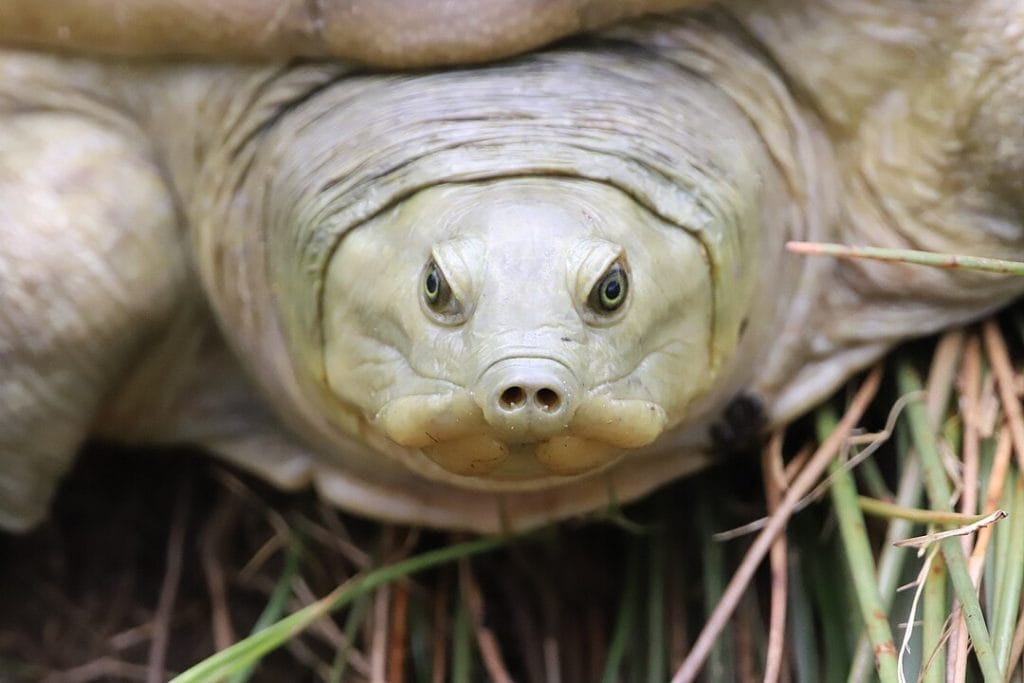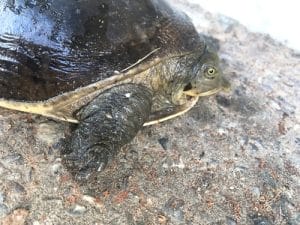Lissemys ceylonensis (Sri Lankan Flapshell Turtle)
Home > Turtle Database > Lissemys ceylonensis (Sri Lankan Flapshell Turtle)

Lissemys ceylonensis is a freshwater turtle native to parts of South Asia. It has a flexible shell flap that covers its limbs, helping it hide from predators.
Native To These Regions
Sri LankaNative Turtle Species Map – Find Turtles by Region
Scientific Classification
- Kingdom: Animalia
- Phylum: Chordata
- Class: Reptilia
- Order: Testudines
- Family: Trionychidae
- Genus: Lissemys
- Species: Lissemys ceylonensis
Common Names
Many people call it the Sri Lankan flapshell turtle. Others simply refer to it as the Ceylon flapshell turtle.
This Hilarious Turtle Book Might Know Your Pet Better Than You Do
Let’s be real—most turtle care guides feel like reading a textbook written by a sleep-deprived zookeeper.
This one’s not that.
Told from the snarky point of view of a grumpy, judgmental turtle, 21 Turtle Truths You’ll Never Read in a Care Guide is packed with sarcasm, sass, and surprisingly useful insights.
And hey—you don’t have to commit to the whole thing just yet.
Grab 2 free truths from the ebook and get a taste of what your turtle really thinks about your setup, your food choices, and that weird plastic palm tree.
It’s funny, it’s honest, and if you’ve ever owned a turtle who glares at you like you’re the problem—you’ll feel seen.
Identification
-Description
It has a flattened body with a soft, leathery shell and a short, pig-like snout. Its olive or brown shell often has faint patterns.
-Sexual Dimorphism
Females tend to grow larger than males. Males usually have longer, thicker tails.
Check more turtles from the Lissemys genus
Native Origin and Distribution
-Geographical Range
It is found in Sri Lanka and southern parts of India. Small groups may also appear in nearby regions.
Preferred Habitat
It lives in slow-moving rivers, marshes, ponds, and lakes. It prefers soft, muddy bottoms and water bodies with dense vegetation.
Behavior
-Feeding Habits
It is omnivorous, feeding on small fish, frogs, insects, and aquatic plants. Its soft snout helps it probe the mud for prey.
-Predators
Larger carnivores, birds of prey, and humans pose a threat. The turtle’s ability to hide under shell flaps helps it escape many predators.
Reproduction
-Breeding Season
They usually mate during the rainy months. Warmer weather and abundant food encourage them to breed.
-Reproductive Method
Females lay eggs on land in carefully chosen spots. After nesting, they cover the eggs and leave them to hatch on their own.
Conservation
-Extinction Status
They are not currently listed as Vulnerable. Still, numbers vary by region.
-Threats
Habitat loss, pollution, and hunting reduce populations. Overuse of water resources also affects their survival.
-Conservation Measures
Protected areas, laws against hunting, and habitat restoration help maintain numbers. Raising public awareness also supports their protection.
Economic Importance
Local communities sometimes use them as a source of food. Some places consider them a food delicacy.
Interesting Facts
Their shell flaps can close tightly, making it hard for predators to reach inside. They can stay underwater for long periods by breathing through their throat lining.

About Author
Muntaseer Rahman started keeping pet turtles back in 2013. He also owns the largest Turtle & Tortoise Facebook community in Bangladesh. These days he is mostly active on Facebook.













